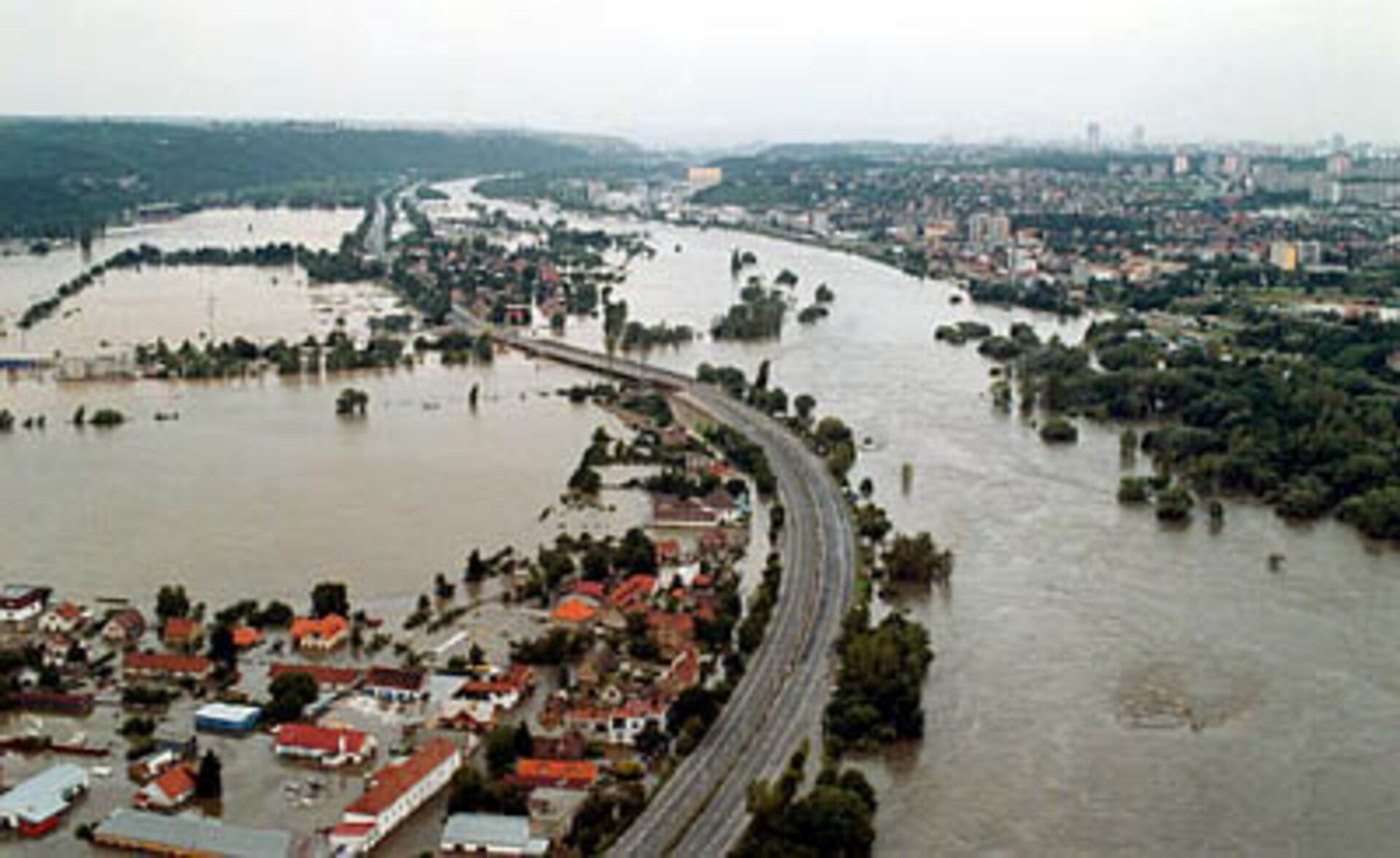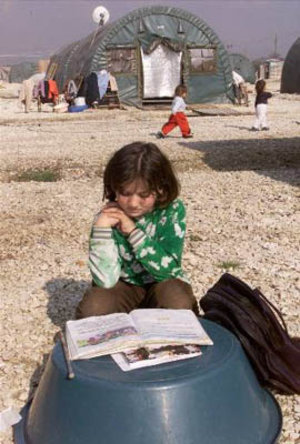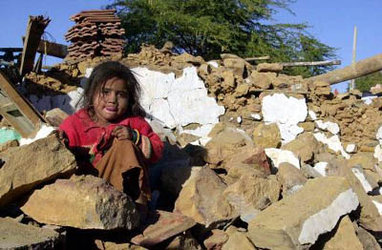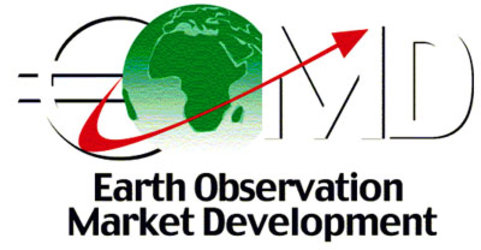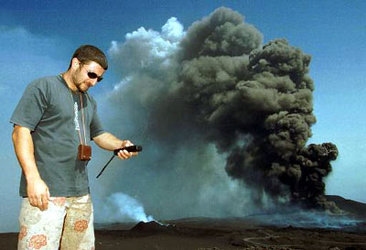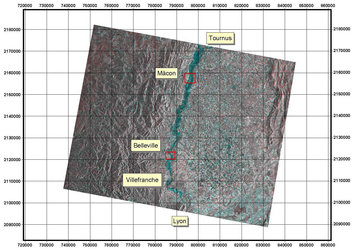Après le déluge: ERS and Envisat imagery contribute to European flood relief
As cleanup efforts begin in the wake of the devastating flooding of Europe’s Elbe River, satellite imagery is providing crisis managers and other civil agencies with a new tool not only for predicting where flood peaks would occur, but also aiding follow-on relief and damage assessment efforts.
Last week, three European nations activated the International Charter on Space and Major Disasters and requested satellite images to assist national, regional and local authorities in coping with the flooding of the Elbe River and other areas that left more than 100 people dead, forced tens of thousands of people to evacuate their homes, and will likely cost tens of billions of Euros to pay for cleaning up and rebuilding the affected areas.
In response, the European Space Agency (ESA) provided archived and newly acquired imagery from its European remote sensing satellites (ERS-1 and -2). The Agency also sent images acquired by Envisat, ESA’s newest environmental satellite. Envisat, which was launched in March, is not yet included among the Charter’s space-based assets. However, images from its advanced synthetic aperture radar (ASAR) proved useful in providing flood information over a wide swath of territory that could not be covered by conventional space or aerial imagery.
Charter activations from Switzerland, Austria and Germany
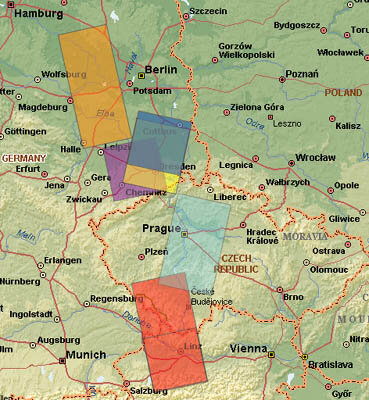
The Charter is an international collaboration to put satellite remote-sensing technology into service for participating rescue authorities and other civil protection agencies. It was activated on 17 August, for the 24th time, to support a Swiss rescue team operating in the Czech Republic. On 20 August, the Austrian Ministry of the Interior requested satellite imagery under the Charter because of concerns that the Danube River would experience the same levels of flooding as the Elbe. Two days later, Germany's Interior Ministry activated the agreement again for satellite data to assess flood levels in hard-hit Dresden and other areas.
“You can’t fly along the Elbe River in a helicopter to get these images,” commented Dr Stefan Voigt, charter coordinator for the German and Austrian requests and the team leader for crisis and disaster management at the German DLR space agency’s remote sensing centre.
Overall, 30 images from the ERS and Envisat satellites have been provided so far to meet the Swiss Austrian and German requests, and more are being prepared. ERS’ synthetic aperture radars (SAR) are capable of penetrating cloud cover and operating at night, significant advantages over instruments that operate in the visible frequencies. Each image is approximately 100 megabytes in size and was provided to the users over the Internet via an ftp connection.
Data could help build flood models
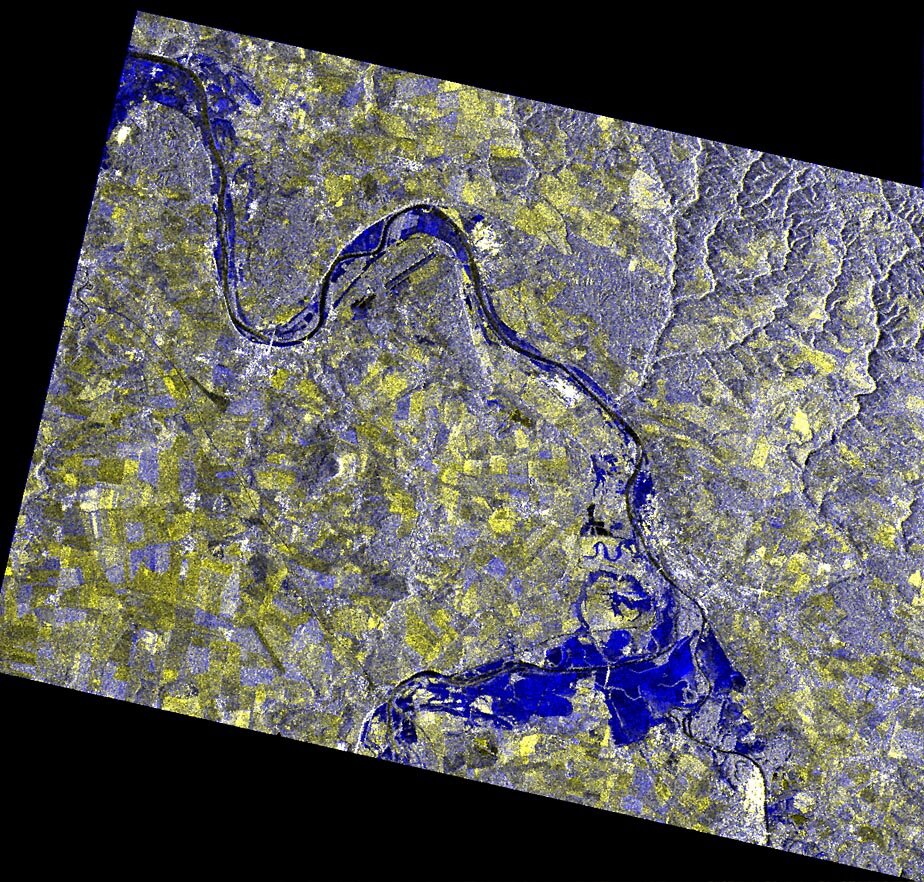
The coordinator of the Swiss effort to support the delivery of pumps and power generators to flooded areas in the Czech Republic, Dr Urs Frei of the remote sensing labs at the University of Zurich, said that the ERS data is being used to generate a digital elevation model to assist authorities in planning for future flood scenarios. “The elevation model could help to simulate different scenarios – which areas would be flooded depending on the water level,” he said.
Among the Envisat images sent was the image accompanying this story and acquired by the spacecraft’s ASAR sensor. The imagery was captured using ASAR’s alternating polarization mode that improves the capability of a SAR sensor to classify different types of terrain, discriminating between, for instance, flooded lowlands and adjacent land. The sensor is the latest generation of radar instruments with increased capabilities over the ERS SAR sensors while maintaining a continuity of service to users.
Imagery to national, regional and local users
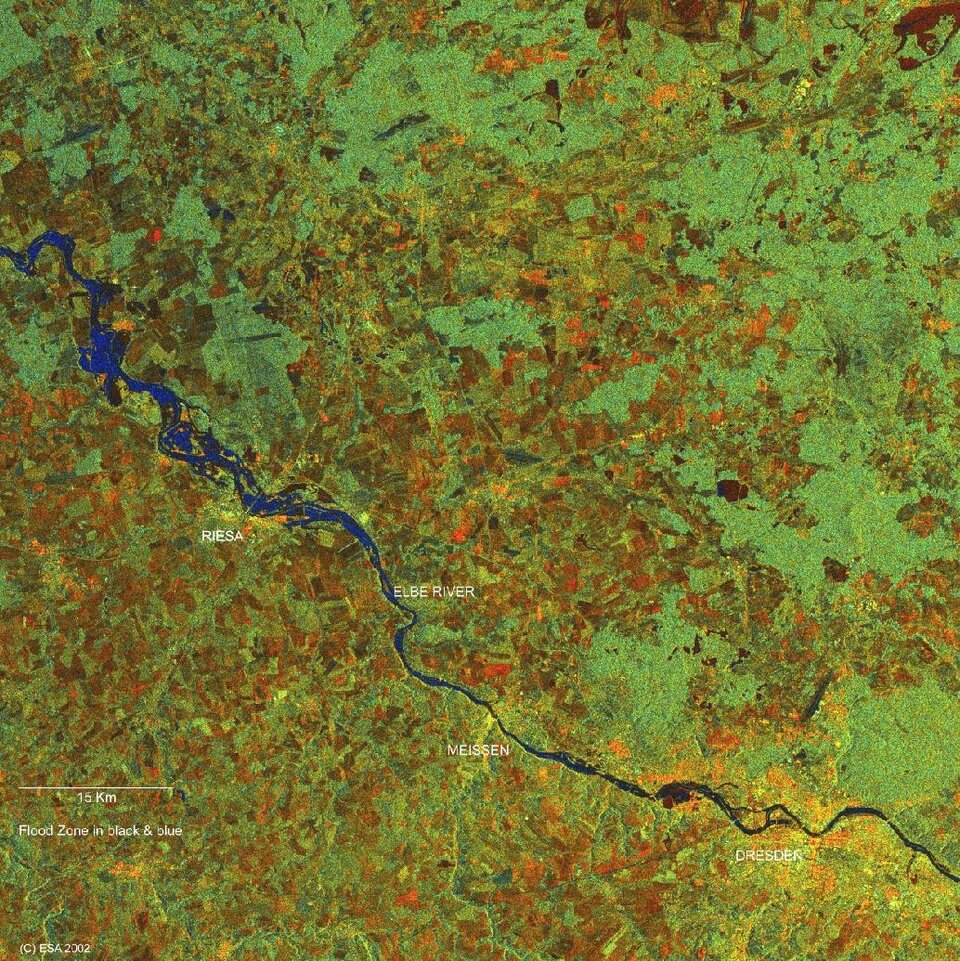
The ERS data was the first imagery of the flooding provided under the Charter requests, recounted Voigt, adding that ESA images were being sent even prior to the formal activation of the Charter by ESA’s Earth Watching project that tries to anticipate trouble spots and make available both archived data and current imagery. In addition to the ESA data, imagery was provided by CNES, the French Space Agency and its SPOT Earth observation satellites, the Canadian Space Agency’s Radarsat, and the Indian IRS sensor.
The imagery proved valuable during last week’s flooding by providing various crisis management teams with an overview of the situation on a large scale. Users ranged from government agencies on the national and regional levels, down to local authorities, relief agencies and civil protection groups.
Specifically, the data was used to fine-tune hydrological models that look at flooding in upstream areas and attempt to predict where the worst downstream flooding will occur in a few day’s time, according to Voigt, who added, “We have a saying: after the flood is before the next one.”
The ‘after-the-flood’ applications could prove even more beneficial for coping with this event and providing data that could help mitigate the next one. Voigt said that the satellite data is expected to be used to assess damage claims for insurance purposes, provide government authorities with needed data for reimbursement to local agencies of reconstruction costs, and allow more precise analyses of the flood’s impact on agriculture, reservoirs, wildlife reserves and wetland areas.
The international Charter was formed after the UNISPACE III conference in Vienna in 1999. Together with ESA, the French Space Agency, the Canadian Space Agency, the Indian Space Research Organization, and the US National Oceanic and Atmospheric Administration have agreed to contribute imagery from a constellation of Earth observation systems, including Radarsat-1, SPOT, ERS, IRS, POES and GOES satellites.















 Germany
Germany
 Austria
Austria
 Belgium
Belgium
 Denmark
Denmark
 Spain
Spain
 Estonia
Estonia
 Finland
Finland
 France
France
 Greece
Greece
 Hungary
Hungary
 Ireland
Ireland
 Italy
Italy
 Luxembourg
Luxembourg
 Norway
Norway
 The Netherlands
The Netherlands
 Poland
Poland
 Portugal
Portugal
 Czechia
Czechia
 Romania
Romania
 United Kingdom
United Kingdom
 Slovenia
Slovenia
 Sweden
Sweden
 Switzerland
Switzerland

























